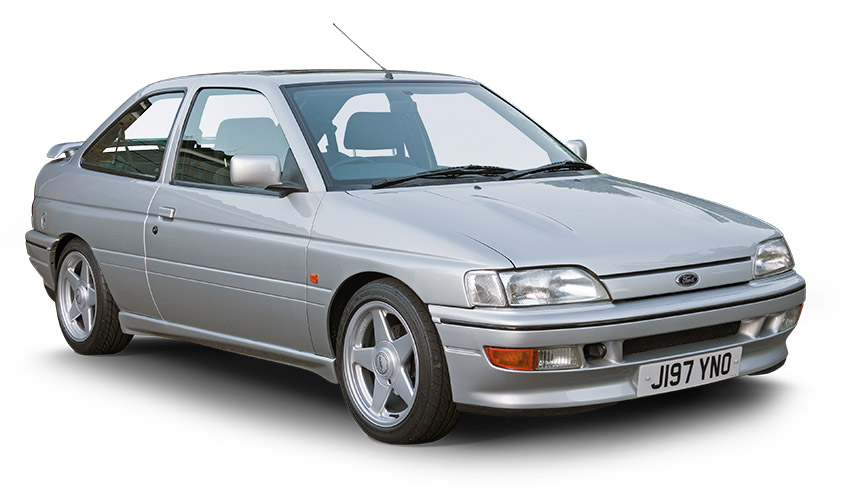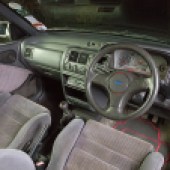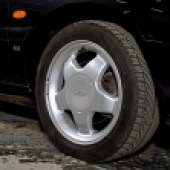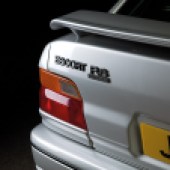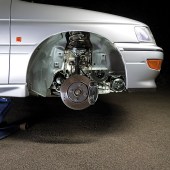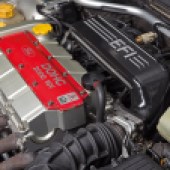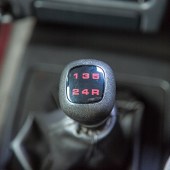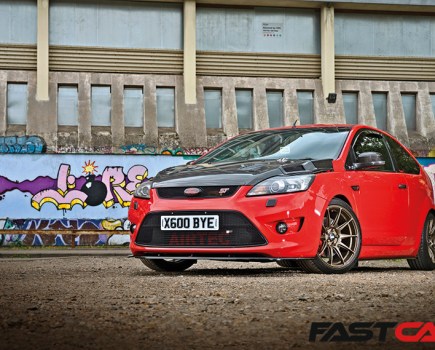The Escort RS2000 is a Rallye Sport Ford product with motorsport pedigree, driving pleasure, everyday practicality, big investment potential and still available for sensible money. Here’s how to buy a good Mk5/Mk6 Ford Escort.
Guide from Fast Ford magazine. Words: Dan Williamson. Photos: Fast Ford archives.
Ford Escort RS2000 Mk5 Mk6 history
October 1990 – Ford Escort Mk5 launched as three- or five-door hatchback, five-door estate or two-door convertible. Carried-over CVH engines, poor handling, heavy steering and dull styling come in for heavy criticism. Lacklustre UK model line-up offers no sporting variant.
February 1991 – Escort S available in UK, featuring sports suspension, rear spoiler, Zolda cloth trim and XR3i EFi-type 1.6 CVH powerplant.
October 1991 – Escort XR3i previewed at London Motorfair, featuring larger headlamps, front bumper with integral indicators and fog lamps, smooth grille, sunroof, colour-coded back bumper, door mirrors and tailgate spoiler, 14in wheels, S suspension and Zetec 16-valve engine – which delayed launch unit February 1992.
November 1991 – RS2000 available, based on XR3i but with side skirts, twin bonnet bulges, 6x15in five-spoke alloy wheels, Recaro seats in Panache cloth, four-wheel disc brakes and 1998cc I4 16-valve engine (148bhp). Heated windscreen is standard.
October 1992 – Facelifted Escort Mk5 arrives, confusingly referred to by some as Mk5A; others as Mk5B (Fast Ford uses Mk5A name). New styling includes oval grille in bonnet (without the bulges) and bulbous back lights. RS2000 gains flared side skirts, rear bumper corner extensions, curved tailgate spoiler and colour-coded rubbing strips.
September 1993 – Raven Acadian upholstery replaces Panache, and three-spoke steering wheel with airbag becomes standard. Cayman Blue replaces Pacifica Blue; Levante Grey replaces Polaris Grey.
Spring 1994 – Opening rear quarter windows are fitted to all RS2000s.
Summer 1994 – Ford Escort RS2000 4×4 becomes available to buy (although a handful of pre-production cars were produced as early as July 1992, and on UK roads).
January 1995 – RS2000 Mk6 launched as FWD or 4×4, mechanically similar to Mk5/A but with revised suspension, no rear anti-roll bar, and rear drums on FWD. New five-spoke 6x15in alloys (from Mk5A Ghia Si) are fitted, as are Raven Flow upholstery and white dials. Heated windscreen now optional.
June 1996 – Ford Escort RS2000 officially discontinued, after 22,291 built (4472 UK registrations).
Why you want a Ford Escort RS2000 Mk5 Mk6
- If you’re a hardcore RS enthusiast, the RS2000 is the most cost-effective way into the driving seat of a Rallye Sport Escort.
- The RS2000 is a terrific all-rounder, still modern and comfy enough for the daily commute, yet an absolutely engaging point-to-point B-road blaster when you want to feel like being a driving hero.
- Unlike the original RS2000, it excelled in motorsport – scooping FWD class honours on the 1994 and ’95 RAC Rally, and winning the British Rally Championship in 1996.
Why you don’t want a Mk5/MK6 Ford Escort RS2000
- Everyone at shows will tell you the Mk5/6 Escort was lousy, and they know because their mate’s mum had a 1.3 Fresco in 2006.
- Body rot takes on a whole new meaning with Mk5/6 Escorts, and the RS2000 seems particularly prone to disintegrating on its A-pillars and floor.
- No matter what you say or try to convince yourself, you’ll park it next to an Escort Cosworth and wish you’d bought the Cossie.
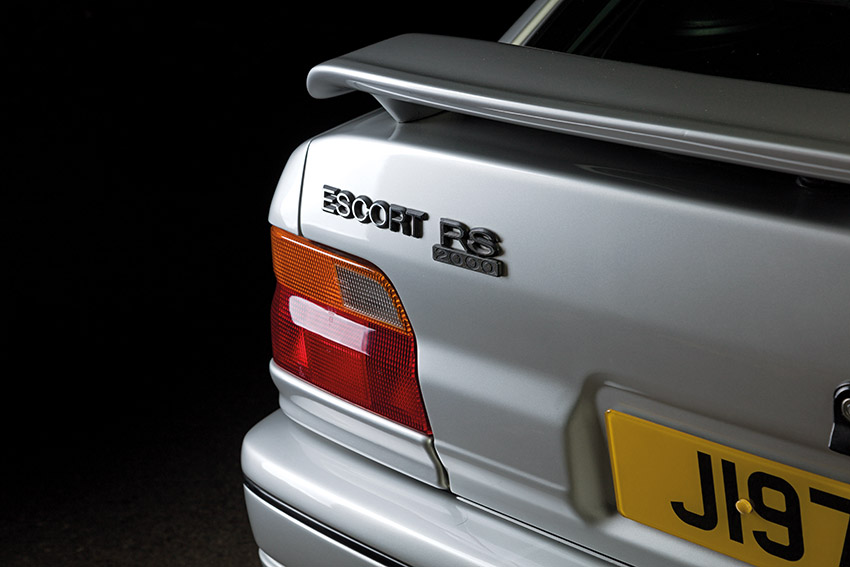
Ford Escort Mk5 Mk6 RS2000 key points
- Body – Rot attacks an RS2000 everywhere: sills, chassis, A-pillars, inner wings, battery tray, fusebox, bulkhead, wheelarches and beyond…
- Engine – Look for smoke from the exhaust – suggesting blown piston rings or head gasket failure.
- Transmission – Tough but not indestructible. Make sure all gears engage and there’s no crunching.
- Interior – Recaros wear on bolsters, and carpets could be damp. Mint trim is incredibly hard to source.
- Electrics – Fusebox issues come as standard – leading to electrical failures. EDIS causes misfires, and a tatty wiring loom can be a headache.
What to look for on the Ford Escort RS2000 Mk5 and Mk6
Identity
As RS values rise, so do the numbers of fakes and ringers on the market. The Mk5/6 RS2000 is no exception, and several have been created using base-model three-door bodyshells or XR3is, which were visually very similar from new.
Invest in a history check, and compare the logbook with the numbers on the car. Inspect the VIN plate (on the slam panel) and chassis number, stamped into the floor (under a flap beside the driver’s seat); post-September 1992 Escorts also have a VIN on the nearside dashboard, visible from outside. The Genk-built RS2000’s code should read WFOBXXGCAB followed by two letters denoting build date and five digits that correspond with the engine number. On other sections of the plate, ensure it says N7 or 7 in the box marked ENG (for I4 engine), Q in TRANS (meaning MTX gearbox), 4 in the AXLE section (FWD) or 8 (4×4), and ABL in the TYP box (FWD) or ABL4 (4×4).
You’ll also need to decide which generation of RS2000 you prefer. The first incarnation Mk5 has most fans, highest value and investment potential thanks to its smart looks – who can argue against the twin bonnet bulges and polished 15in rims?
The Mk5A wasn’t as pretty, but its beefed-up bodyshell was stiffer and safer. Meanwhile, the Mk6 was a smoother all-round package, with improved suspension layout (it had three-bolt front strut fixings, as opposed to the Mk5’s two; the Mk6 also wore a stiffer back axle, negating the need for the rear anti-roll bar found on all Mk5 RS2000s) and better gas dampers. On the downside, the styling was anonymous, with Ghia Si five-spoke alloys and a bodykit that’s easily mistaken for an Escort GTi or even Si.
The Ford Escort RS2000 4×4 is a rare oddity, with impressive grip but numbed performance. Values of 4x4s are gradually climbing above those of FWD RS2000s due to low survival rates – some say there were just 601 4x4s sold in the UK, with a mere 135 being Mk5As.
All 4x4s looked outwardly identical to other RS2000s, apart from small 4×4 badges. But underneath should be immediately obvious: you’ll want to see a unique alloy rear crossmember, differential and driveshafts, plus plastic petrol tank, and shallower spare wheel well with space-saver tyre.
Oh, and keep your eyes peeled for an original BBR-converted Ford Escort RS2000 turbo. A handful were built, and reportedly packed 200bhp – the car Ford should have built all along.
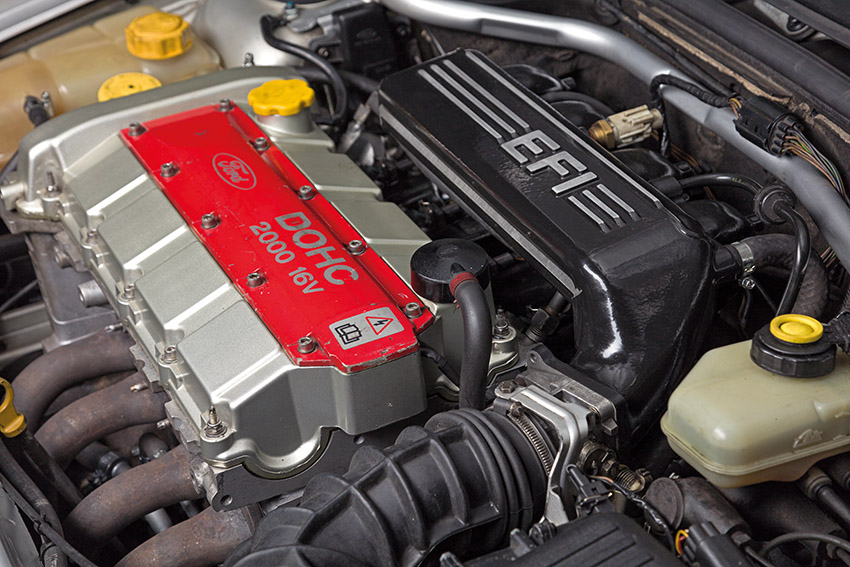
Engine and Transmission
I4 engine was a stopgap until Ford got the Zetec ready for production, so it’s not well-served with specialists or tuning components. Thankfully, it’s tough – based on the heavy DOHC eight-valve Sierra powerplant but with 16-valve head and chain-driven camshafts – and likes to rev.
Check for smoke from the exhaust: blue at start-up suggests worn valve stem seals; blue under load points to tired piston rings or cylinder bores; white warns of head gasket failure, often accompanied by signs of coolant in the oil – look for mayonnaise under the oil filler cap. Mk5A RS2000s had a revised head gasket, but failure on any is possible. The revised gasket also tended to cure oil leaks from the front of the engine, between the block and head.
Oil dripping from the rocker cover gasket and cam pulley seal is very common, but beware of an engine that’s been allowed to run low, especially if it’s tapping when warm. I4s are prone to a knackered oil pressure relief valve, which reduces oil pressure, so some owners fit an aftermarket gauge to keep an eye on it.
Hydraulic tappets may be rattling when cold, but should be quiet at operating temperature. Replacement is a head-off job and means swapping all 16, so it’s a pricey task.
Excessive noise at tickover could also point to a tired timing chain. It should last indefinitely, but expert advice is to change the chain between 60,000 and 100,000 miles, or if it’s rattling at high revs.
The Ford Escort RS2000 is no fireball, but its 148bhp should have some grunt. If not, suspect a clogged catalytic converter or duff lambda sensor (the former typically makes the car reluctant to rev; the latter usually accompanied by lousy fuel economy and high emissions). De-catting the car is a good idea – especially for an ultra-early RS2000 (built before 1992) because it won’t need a cat for an MOT.
A rough idle and poor running could also be due to a sticky idle speed control valve (found atop the air filter housing); squirt it with carburettor cleaner to see if it fixes the problem.
Misfires may come from faulty coil packs (typically breaking under the plug cover), the Electronic Distributorless Ignition System (EDIS) module going haywire (the cure is replacement or wiring an earth to the battery). or a variety of fusebox and electrical issues: the fusebox often suffers from water ingress (dripping down from the battery tray) and subsequent corrosion. Symptoms range from minor issues with electrical gadgets to the engine cutting out.
Stripping and re-soldering the joints is the time-consuming solution, so look out for bodged cables in the engine bay, along with corroded connectors, loose or dirty multi-plugs, or chafed sheathing. A new loom won’t be cheap or easy to replace.
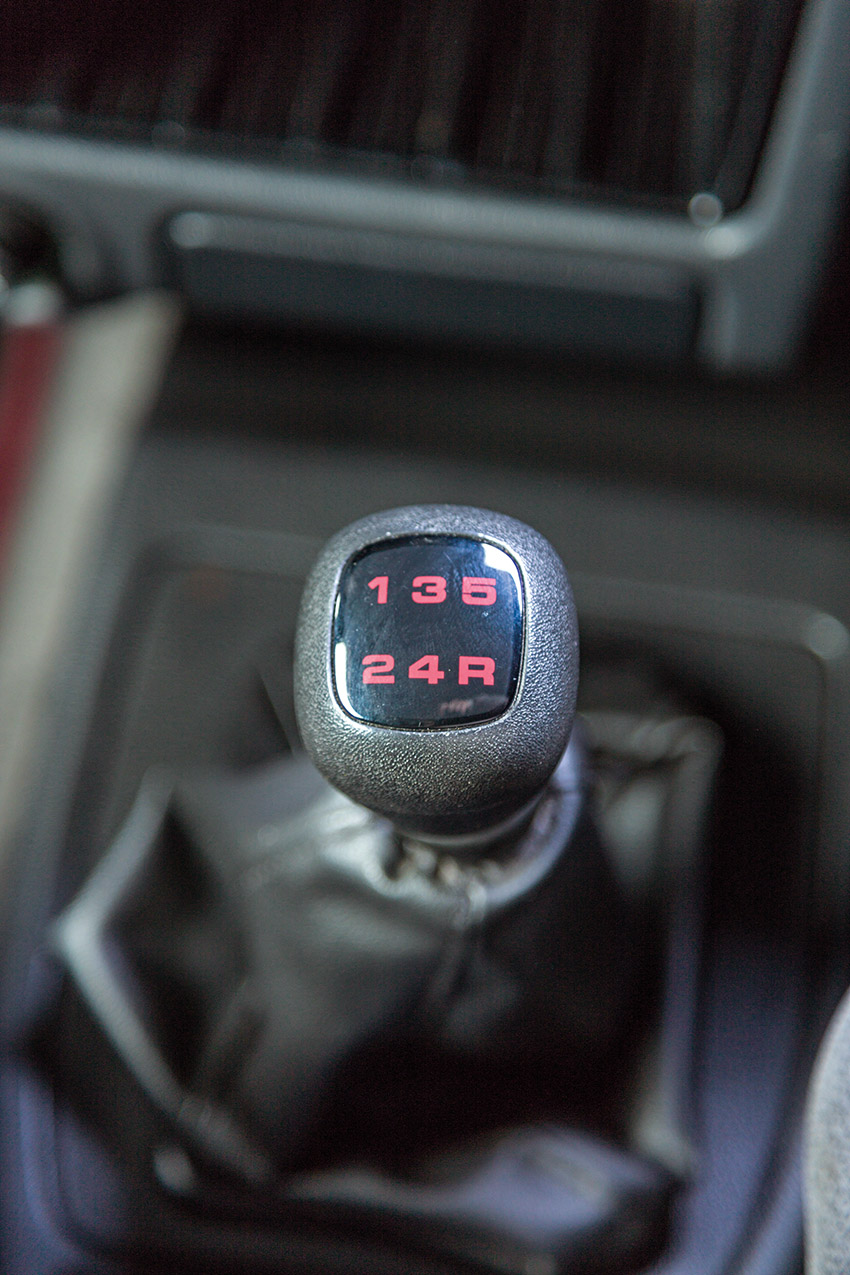
Front-wheel-drive RS2000s – which accounts for the vast majority – had an almost unburstable MTX-75 gearbox. You’ll probably not kill it with an I4’s torque, but wear can take its toll.
Make sure the gearshift is smooth; crunching between second and third gears suggests synchromesh failure, which means the ‘box needs a pricey rebuild. First and reverse gears are typically notchy (especially when cold) but beware of transmission noise from rumbling bearings, particularly when driving in third gear. Look out for oil dripping underneath, which will most likely be from the output seals.
Four-wheel-drive RS2000s aren’t quite so straightforward. The transfer box is renowned for weakness, and can even break if your tyre tread depths are uneven front to rear. Oil changes are essential every 10,000 miles, and it’s tricky to find a good replacement if the transfer box fails altogether – a distinct possibility if the car’s been modified.
Plenty of 4x4s with knackered transfer boxes have been converted to run front-wheel drive, so check before buying. Jack up the car and ensure all four wheels turn through the transmission. Take a test drive, and beware of vibrations and/or nasty noises from the drivetrain, especially jerkiness at low speeds.
Clutch slip is common, especially if a Ford Escort RS2000 has been thrashed. Wear can occur at any mileage, so take a drive in fourth gear at 2000rpm and floor the throttle. If the revs rise but the road speed doesn’t, the clutch is in need of replacement.
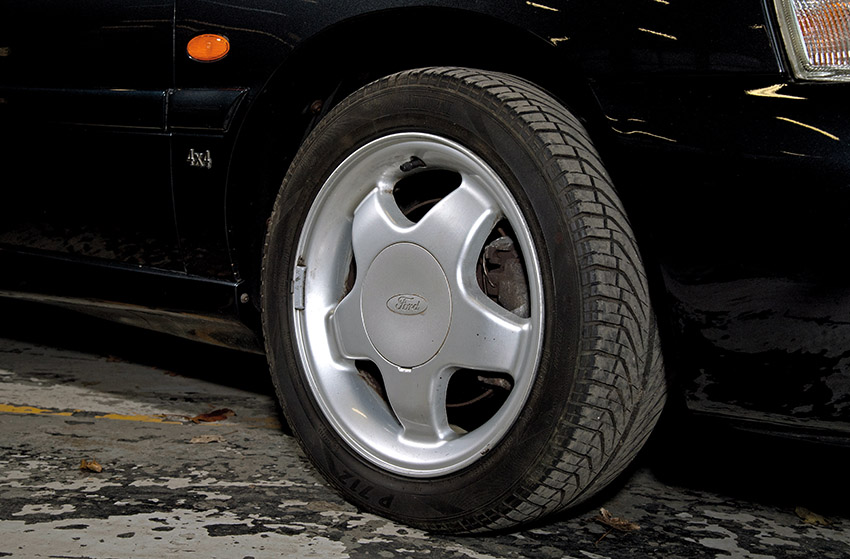
Suspension & Brakes
A Ford Escort RS2000 won’t handle like a Fiesta ST, although you might be pleasantly surprised by how enjoyable it is to chuck around. Any decent standard example should exhibit understeer and lifeless steering – that’s just the Mk5/6 platform – but it should be smooth and quiet.
Clonking from the front suspension is common, generally caused by worn wishbone bushes and usually accompanied by vague steering, wandering on straight roads and uneven tyre wear. Genuine Ford heavy-duty van suspension arms are worth seeking out (cheap aftermarket bits don’t last long), although polyurethane bushes are a fit-and-forget solution.
Rattling may also be due to broken drop links or a snapped spring, while tired dampers can cause knocking over bumps, meanwhile giving a wallowy ride and lousy handling.
Listen for whining from the power steering pump (possibly accompanied by a fluid leak at the reservoir), and rumbling from wheel bearings – especially on the rear.
Beware of an Escort feeling particularly floppy from the back end, because rotten suspension mounts will cause such a sensation, and will be predictably dangerous.
Many RS2000s are by now rolling on uprated suspension, but avoid lowering more than 35mm, especially on a 4×4, where the propshafts won’t take kindly to wacky angles.
RS2000 brakes are poor by modern standards, but should haul up a standard car in a straight line. The front 260mm ventilated discs are prone to juddering felt through the pedal, which is usually a case of contamination on the discs/pads, and need for replacement – a cheap and easy job.
If the pedal feels spongy, it may just be that the fluid is due for refreshment, but beware of ballooning flexible hoses, and check the metal pipes for corrosion. Braided brake lines are highly recommended, and if you enjoy driving, it’s worth upgrading to Mk1 Mondeo V6 anchors (which fit behind standard RS alloys) or Focus ST170 stoppers (which will mean going up to 16in rims).
Rear brakes on the Mk5/Mk5A and Mk6 4×4 were 270mm solid rear discs, which are prone to squeaking; typically, the load-apportioning valve will be stuck. The rear callipers can also seize, so check the handbrake holds the car on a few clicks.
Mk6 front-wheel-drive RS2000s had lowly drums on the back, which again need checking for handbrake operation or leaks from the wheel cylinders. Ideally, upgrade to discs.
Teves ABS was standard, which shouldn’t cause many issues aside from dirty or malfunctioning sensors. Check the ABS warning light comes on with the ignition and goes off again after starting the engine.
Mk5/A RS2000s ran on polished 15in alloys from the factory, but they’re famed for corrosion and lacquer peel. Most have by now been resprayed silver, but restoration can be tackled by a wheel specialist.
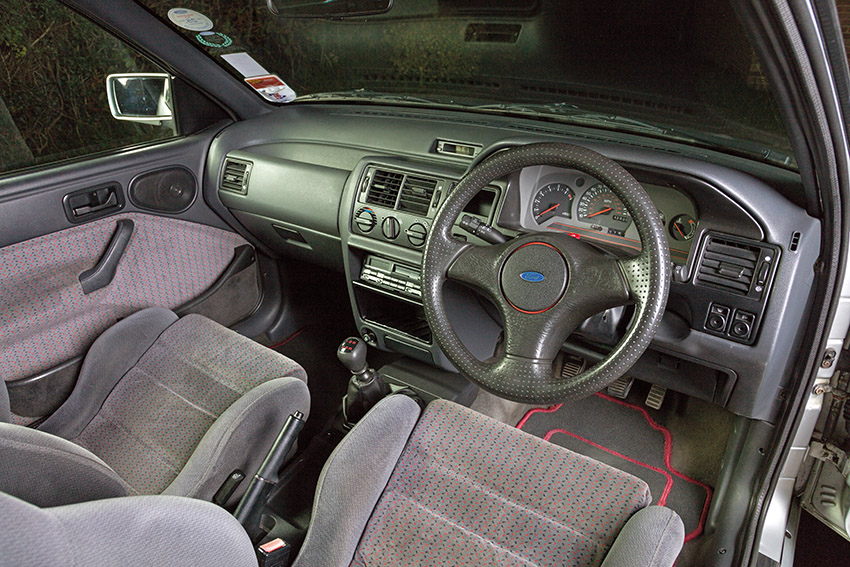
Interior
Any high-priced Ford Escort RS2000 should have a spotless interior, or you’ll need to barter accordingly.
Recaro front seats were standard, and wear relatively quickly on the bolsters. Don’t be shocked to see a fairly-low-mileage example with frayed or torn upholstery, especially if the owner is on the hefty side.
Adjuster mechanisms work themselves loose, and seat frames are especially prone to snapping; you’ll need to weld it or replace the seat altogether. That’s easier said than done, so expect to dig deep for top-notch Recaros, especially in the Panache or Acadian cloth trim of Mk5 models. Raven Flow upholstery of the Mk6 is easier to find second-hand. Naturally, you’ll need to check the door cards are matching and free from rips or cigarette burns.
Most Mk5/6 Escorts have rattling and creaking dashboards, getting worse over time; if it’s especially bad, suspect the mileage might not be genuine, or the dash has been out of the car several times – perhaps for welding.
Feel the carpets for any dampness from the engine bay (particularly the battery tray area) or sunroof rubbers. If they’ve been left wet for some time, the floor beneath will probably be rotten. Peel back the carpets if possible.
Check for puddles in the boot floor too – usually caused by dislodged sunroof drains, which are routed behind the plastic trim. Removing the trims to cable-tie them into place is easy, but repairing a rusty boot floor isn’t so simple.
Although the RS2000’s electrical gadgets are shared with lesser-model Escorts, they’re becoming more difficult to source, so make sure everything works. Electric windows and/or switches tend to fail, as do central locking motors. Buttons, switches and stalks can become sloppy, and the instrument cluster could be playing up – erratic fuel and temperature gauges are typical, and often due to a duff sender unit. Glowing lights and a faulty heater blower can also be caused by burnt-out tracks or corrosion in the fusebox, so check it from beneath.
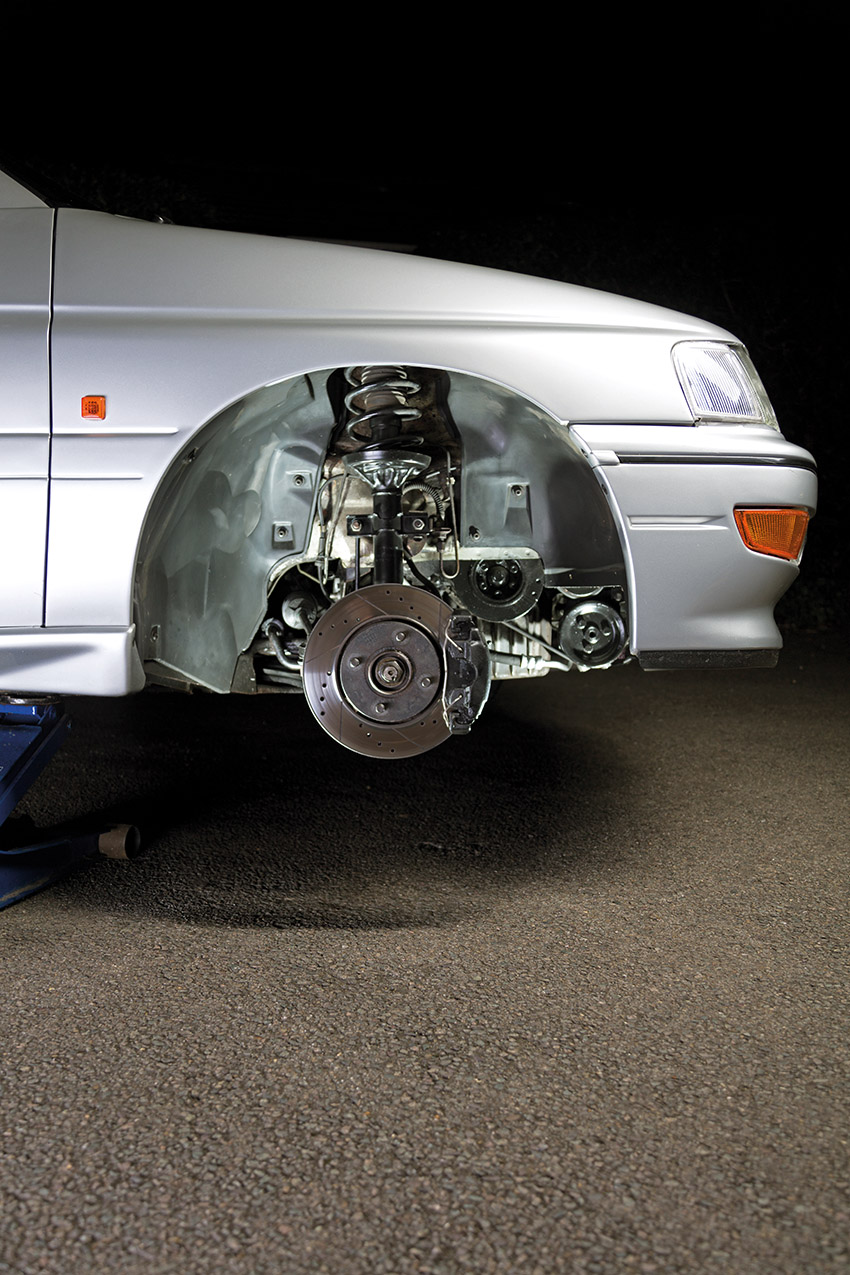
Exterior
Corrosion can still kill a Ford Escort RS2000, so don’t think the fancy badge offers any protection. In fact, it’s fair to say RS2000s have suffered more than most mainstream models – simply because they’ve survived longer.
A thorough bodywork inspection is vital – especially on a mid-priced car, which could be a basket case in need of total renovation.
Some rot will be obvious immediately. Front wings (especially where they meet the side skirts), sills (outer and inner sills could be crumbling, with rot spreading behind the skirts), rear wheelarches and around the petrol flap (rust bubbles from inside out) are typical problem areas. Open the doors, examine their surrounds, and inspect the A-pillars; you might need to peel back the rubber seals, but some cars are so rotten that you’ll see huge holes, in many cases reaching up to the sunroof. Such bodyshells are borderline scrap, and should be tackled only by experts or the brave.
Look around the rear window seals, beneath the rear spoiler, around the tailgate and pretty much anywhere else made of metal; if it can corrode, it will.
Lift the bonnet (is it rusty?), check around the suspension turrets, bulkhead and battery tray; most by now have been repaired – even on otherwise-mint RS2000s.
Underneath, inspect the front floors, and especially the rear chassis rails and suspension mounting points. It’s common to find heavy corrosion, which will require extensive welding to fix properly.
Most repair panels are available – they’re the same as stock three-door Mk5/6 Escorts – although genuine Ford items are rare and pricey.
Early double-bulge bonnets are now becoming sought-after, while even the bodykit is getting scarce, despite the Mk6 version being shared with the later Escort GTi. RS2000 headlamps and sidelights were the same as the Escort Cossie’s, so can be stupidly expensive – especially the sidelights, which are prone to snapping on the mounting brackets. Even tatty second-hand replacements are a three-figure sum.

Ford Escort RS2000 Mk5 Mk6 prices
Project: £2000 to £5000 – You might find a box of bolts and a jar of rust for less, but £2k is the least you’ll need to bag an RS2000 with some hope of being restorable. Even at the top of this price bracket, you’ll be lucky to find a car without tonnes of tinworm, even if it has an MOT.
Good: £5000 to £8000 – A usable RS2000 is worth paying the extra for, but you should expect to see signs of welding underneath (preferably to a decent standard) and most of the right RS bits still attached. Beware of investing more in a modified example, which devalues the car.
Concours: £8000 to £15,000-plus – Look out for low-mileage, low-owner RS2000s for this price, and be sure to search for factory-original specification with excellent-condition interior trim. A concours unrestored RS with the right provenance will easily go beyond this price – especially at a collectors’ car auction.
Ford Escort Mk5 Mk6 images
Tech Spec: Ford Escort RS2000
Engine:
1998cc in-line four-cylinder, 16-valve, DOHC I4 with cast iron block and alloy head, 10.3:1 compression ratio, Ford EEC-IV electronic fuel injection and engine management, four-branch exhaust manifold
Transmission:
Front-wheel drive with MTX-75 five-speed manual gearbox or four-wheel drive with MTX-75 five-speed manual gearbox plus transfer box, viscous-coupling centre differential, viscous-coupling limited-slip rear differential, 34/66 front/rear torque split
Suspension:
Front: MacPherson struts, uprated coil springs, telescopic dampers and 16 mm anti-roll bar; rear: torsion beam axle, uprated coil springs, trailing arms, telescopic dampers and 20mm anti-roll bar (deleted on Mk6)
Brakes:
Front: 260mm ventilated discs; rear: 270mm solid rear discs (Mk5 and 4×4) or drums (FWD Mk6); Teves ABS
Wheels & Tyres:
6×15 inch five-spoke alloys with 195/50VR15 tyres
Exterior:
Escort three-door hatchback body with colour-coded Ford RS bodykit comprising deep front bumper, side skirts, deep rear bumper and tailgate spoiler, bonnet bulges (deleted on Mk5A onwards), colour-coded door mirrors, front driving lamps, tinted glass, heated windscreen (optional on some model years), electric front windows, opening rear quarter windows, tilting/sliding glass sunroof. Colours included Diamond White, Radiant Red, Nouveau Red, Black, Ash Black, Cayman Blue, Pacifica Blue, Petrol Blue, Auralis Blue, Slate Blue, Levante Grey, Polaris Grey, Moondust Silver, Tourmallard Green, Dark Aubergine, Alberto Green, Java Blue, Mallard Green, Loden Green, Nantucket Grey
Interior:
Raven Panache (Raven Acadian from 1993; Raven Flow from Mk6) Recaro front seats and matching rear bench, three-spoke sports steering wheel. Optional air conditioning and audio upgrades

